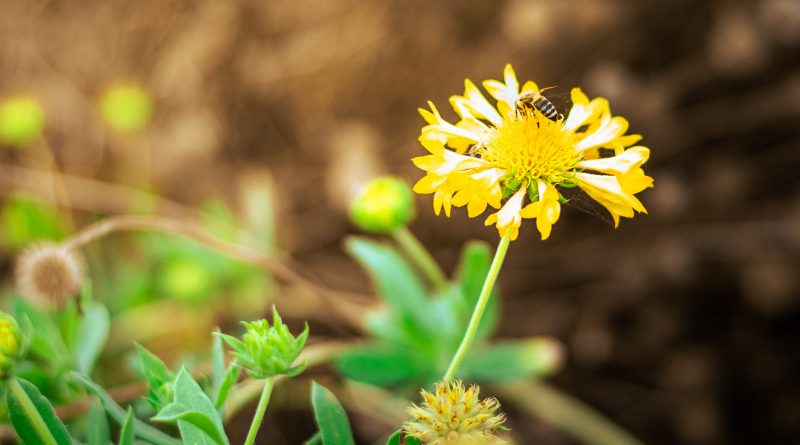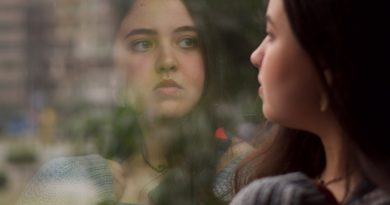What’s Killing AUC’s Bees?
By: Darin Hany
Photographer: Omar Abozeid
In early October, faculty and students told The Caravan that they had spotted a large number of dead bees on the ground near the Centre for the Arts (PVA) building at the New Cairo campus.
A number of factors, including the use of pesticide, may have contributed to the higher-than-normal bee mortality on campus.
Landscape engineers on campus explained that there could be many reasons for the death of bees such as death of natural causes, and/or human activity.
“AUC adopts a system called Integrated Pest Management (IPM), and based on that we have several types of control over pests, like agricultural control, physical control, biological control and then lastly, the chemical control,” said Executive Landscape Engineer Mahmoud Badr, who has worked on landscape maintenance since 2007 at AUC.
The system covers a wide variety of services ranging from cutting trees, mowing lawns, watering plants, pest control, and other practices.
“The bees on campus can die [for] several reasons. When a bee stings someone with its stinger attached to its body, the stinger falls off, which results in the death of the bee, they also could have extracted nectar from a flower that had pesticides on it, or it could be due to malnutrition, or the beehive got attacked and the bees abandoned their home, leading to the death of some,” said Mohamed Emara, a landscape engineer on campus.
The problem in Egypt is that most people don’t have this kind of awareness, so instead of adopting the IPM system, they resort to chemical pesticides first and foremost.
“At AUC, unfortunately, bees are looked at as a problem and not a solution and often are disregarded for their hard work and contribution to the environment as so many people complain [about] these bees,” Emara added.
However, he emphasized that the Landscape unit views bees as vital to the planet’s ecology and treats them as useful insects. When there are beehives reported on campus, the department captures them while keeping them safe and sends them to an apiary where beehives are kept to produce honey.
According to the United Nations Environment Programme (UNEP), bees play an essential role in the biodiversity humans depend on for their survival. They contribute directly to food security, as one third of the world’s food population depends on their production of honey.
“At the landscape office, we do not kill these bees; we make sure we put them away in a safe place while also pleasing the AUC community as much as possible,” said Emara
There are two types of preventive measures taken to protect the landscape of the university as well as the AUC community – maintaining public health and agriculture on campus.
In the measures taken for agricultural pest control, the university is concerned with maintaining the environment’s welfare. Hence, they focus on decreasing the use of chemical pesticides, seen as a last resort after they have used up all necessary means to control pest risks on campus.
Agricultural control is concerned with trimming trees or plants, making sure they are exposed to the correct amount of sunlight, and ensuring there isn’t any fungus on the stems or roots of the plants.
Another type of control is physical control, in which they use traps set for different types of insects that attack fruit trees or plants.
“The physical control is concerned with tangible matters, like the lighting, the scent, the colors of the things to attract insects that attack fruit trees and capture them before resulting in further damage. For example, fruit flies are attracted to the color yellow, hence we use yellow traps,” explained Badr.
There is also biological control, which requires using predator insects like ladybugs and green lacewings to feed on harmful pests.
“Sometimes we reach a point that is called ‘critical economic limit’, which requires that we limit the number of pests that attack the plants on campus,” said Badr.
When all preventive measures have been taken, but the plants remain at risk, the department is then forced to resort to pesticides in the affected area.
“There are two types of pesticides, there are safe pesticides made out of natural oils, that could be sprayed on flowers or crops like the oils extracted from the neem tree, which has a repelling smell to the insect, then there are the chemical pesticides,” explained Badr.
When using chemical pesticides, the department has to be very careful while spraying the affected areas. For example, landscape personnel are required to wear protective gear.
“When we attempt to spray the pesticides we have to make sure no one is on campus, so we usually do that on the weekends; after spraying there is a safety period for those pesticides, which means we cannot use or consume any of the plants or trees exposed to the pesticides before a specific period of rest, ranging from two days to a week,” Badr said.




